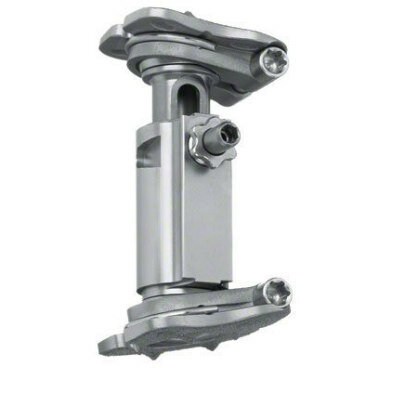Novel Bioresorbable Stent Improves Vessel Healing
By HospiMedica International staff writers
Posted on 20 Mar 2018
An improved bioresorbable scaffold (BRS) offers a thin strut profile that does not compromise strength or visibility under x-ray.Posted on 20 Mar 2018
The Reva Medical (San Diego, CA, USA) Fantom Encore is a sirolimus-eluting BRS developed as an alternative to metallic stents for the treatment of coronary artery disease (CAD). The 2.5 millimeter diameter, 95 micron strut profile scaffold is intended to restore blood flow, support the artery through the healing process, and then be resorbed from the body over a period of time, allowing the return of natural movement and function of the artery.

Image: A thin, bioresorbable scaffold is visible under x-ray (Photo courtesy of Reva Medical).
Fantom Encore is made of Tyrocore, a proprietary iodinated desaminotyrosine polycarbonate designed specifically for vascular scaffold applications. Derived from naturally occurring tyrosine amino acid, it is covalently bound to iodine for radiopacity, making it visible under fluoroscopy, facilitating placement. In addition, Tyrocore degradation aligns to vessel healing and recovery, with benign degradants that promote restoration of natural vasomotion within one year, with total resorption of the BRS completed within four years. Fantom Encore has received the European Community CE Mark of approval.
“Reva developed a novel polymer, Tyrocore, and then used it to create a bioresorbable scaffold with the most advanced features available: x-ray visibility and a 95 micron profile,” said Reggie Groves, CEO of Reva Medical. “We expect that Fantom Encore will deliver the next level of performance as we expand commercialization of our bioresorbable scaffolds.”
“Fantom Encore has the thinnest strut profile of any available bioresorbable scaffold in the 2.5 millimeter diameter size. A thinner profile can improve ease-of-use during the implant procedure and vessel healing following the procedure,” said Matthias Lutz, MD, of Universitätsklinikum Schleswig-Holstein (Kiel, Germany), who implanted the first Fantom Encore BRS. “Bioresorbable scaffolds have the potential to improve long-term outcomes compared with metal drug-eluting stents, and are an important treatment option for my patients.”
Bioresorbable scaffolds were hailed as the next step in the innovation chain after bare metal stents and drug-eluting variants. But low sales and safety concerns resulted in Abbott stopping sales of its Xience BRS in 2017, despite its narrow 83-micron strut size. At roughly the same time, Boston Scientific also scrapped its bioresorbable stent program due to its wide, 150-micron struts.
Related Links:
Reva Medical














